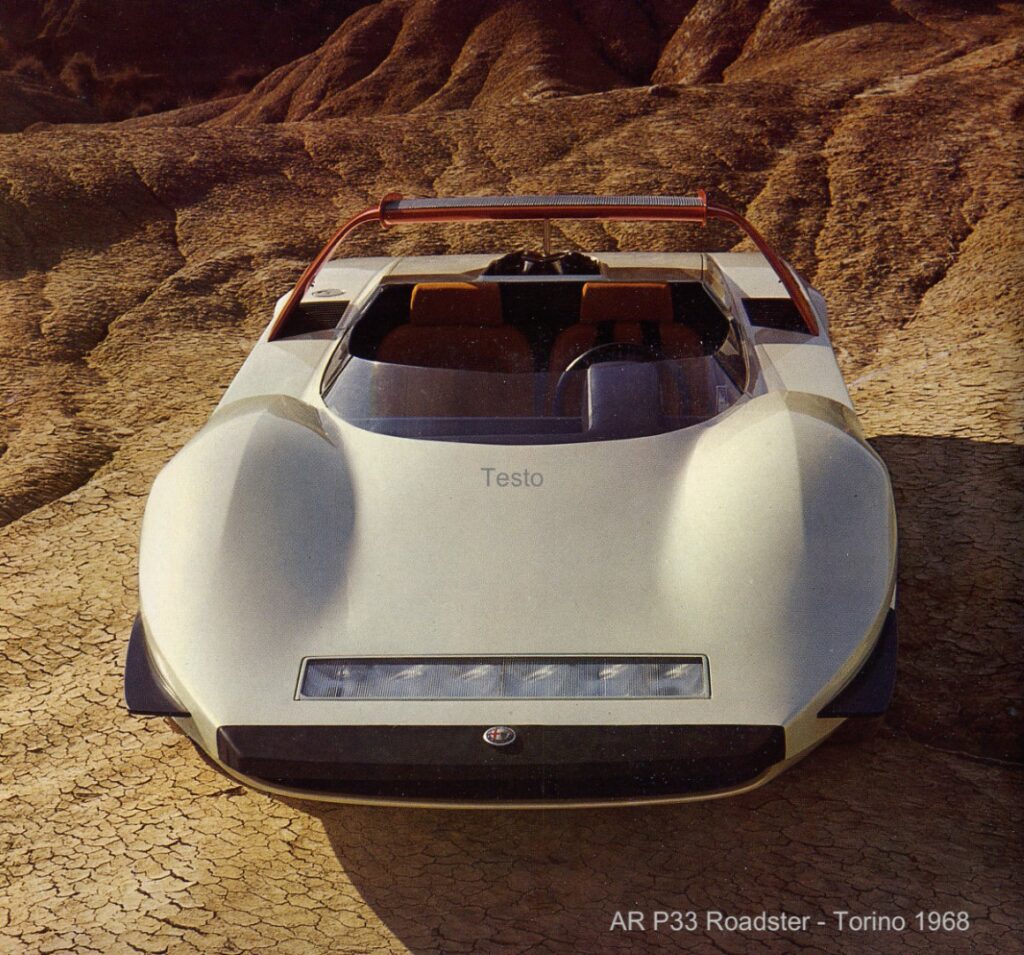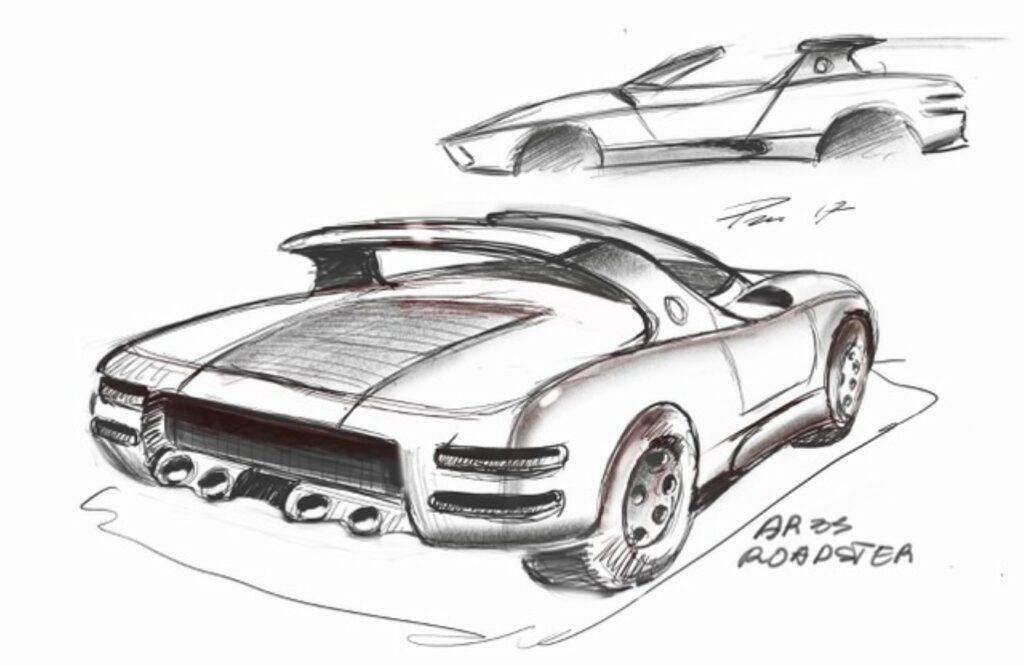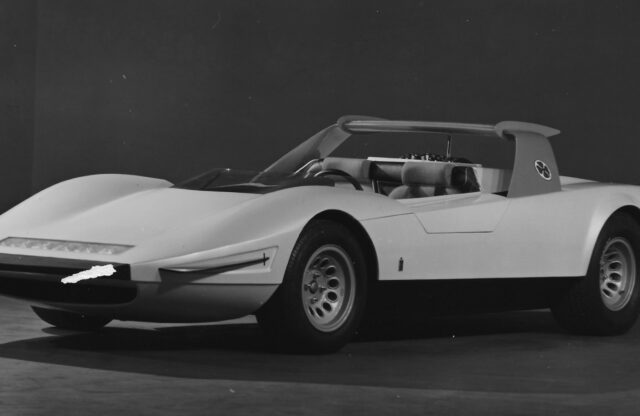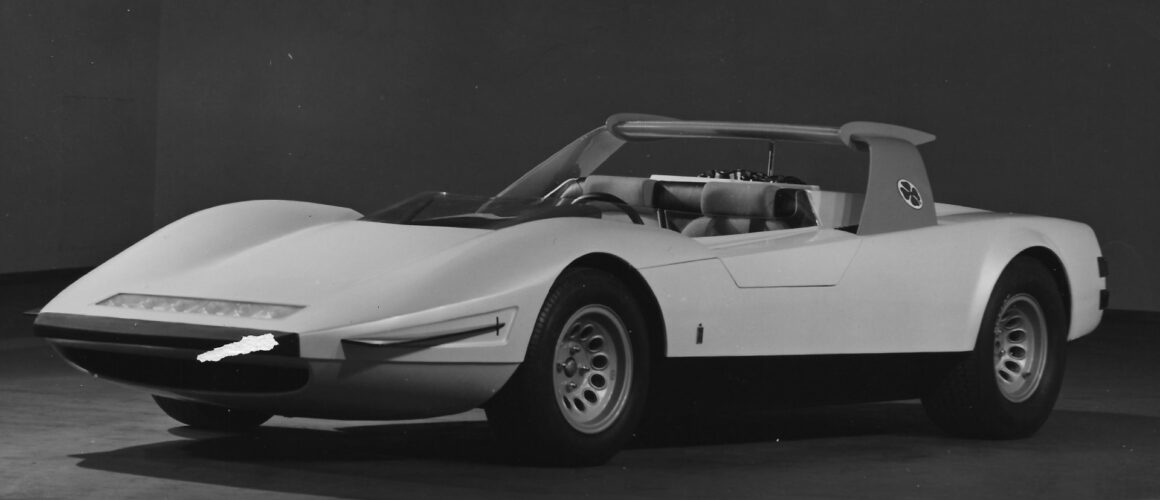“The Alfa Romeo Cuneo is the unfortunate work of engineer Fioravanti,” says Paolo Martin. A pretty brutal summation of the Cuneo, which is often attributed to Martin – but it turns out that Leonardo Fioravanti was indeed responsible for its design.
This story first appeared in Magneto issue 20
We’re getting ahead of ourselves, however. The Cuneo’s chassis, no. 75033.108, was first used for the P33 Roadster, as designed by Paolo and revealed at the Turin Motor Show in 1968, just a few weeks after Marcello Gandini’s Carabo.

“In June ’68, Pininfarina’s director of design, Franco Martinengo, commissioned me to quickly design a car for Turin in October,” Martin explains. “It had to be simple given the short time available – so I limited the complications as much as possible, and a 1:1-scale design was immediately created.”
Simplicity may have been the intention, but the results included some advanced aerodynamic work for the time; the canards around the nose are commonplace on hypercars and racing cars nowadays, but they were rarely seen in the 1960s.

Meanwhile, the huge wing was entirely practical. Aside from the obvious addition of downforce, it acted as a roll bar. But it also contained the oil radiator, which allowed an uninterrupted flow of cold air to cool the mid-mounted 2.0-litre V8. The wing moved with the airflow, too, rotating around a central axis. There was some room for theatre, though – at the rear, eight exhaust pipes exited from a central bank between the tail-lights.
Despite a positive critical reaction to the design – and immortality via a popular Corgi toy – the P33 Roadster was soon dismantled, much to the surprise of Martin. Fioravanti would then present his Cuneo concept, based on the same chassis, at the Brussels Motor Show in January 1971. “I was initially perplexed and later very annoyed,” Paolo recalls. His thoughts on the Cuneo? Well, let’s say he isn’t a fan (see our feature on Alfa’s concept cars in issue 20).

And Fioravanti’s response? “My answer, with precision as an engineer… is in my book The Cavallino in the Heart, Giorgio Nada Editore (Italian version).”
The story doesn’t end there: Martin has kept the sketches, as well as a wooden scale model, with the hopes that the P33 Roadster might live again. Indeed, he’s drafted a 21st century version – rounder at the flanks, with half the number of exhausts, but as incisor sharp as the original. Might there be a rebirth on the cards? “Sometimes reality fades but dreams remain,” he says.




